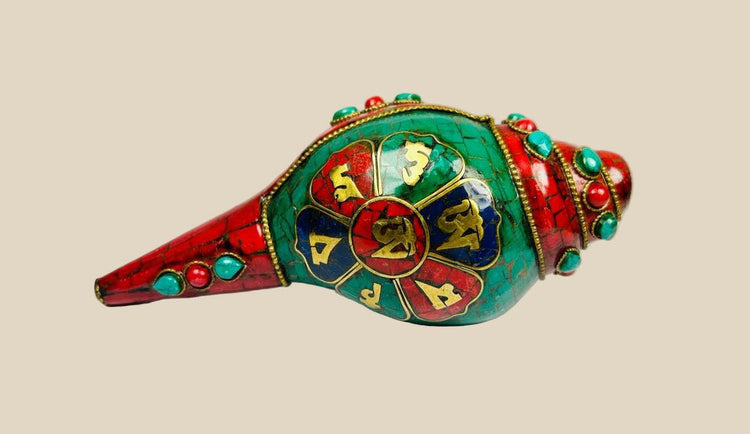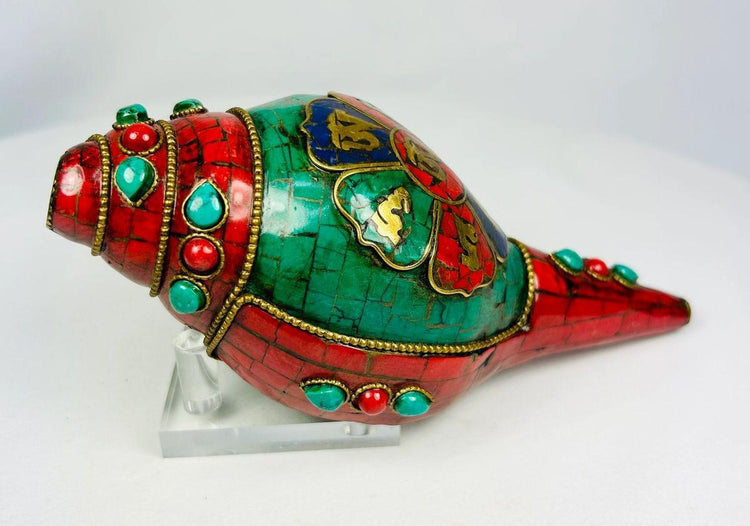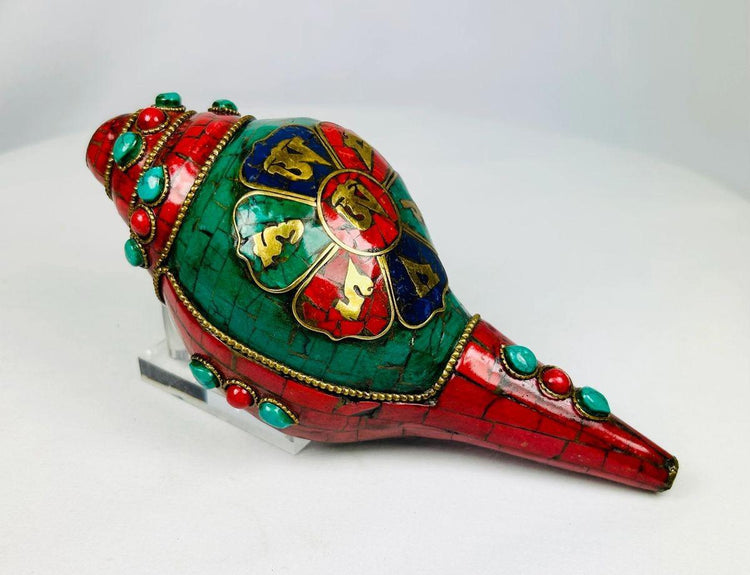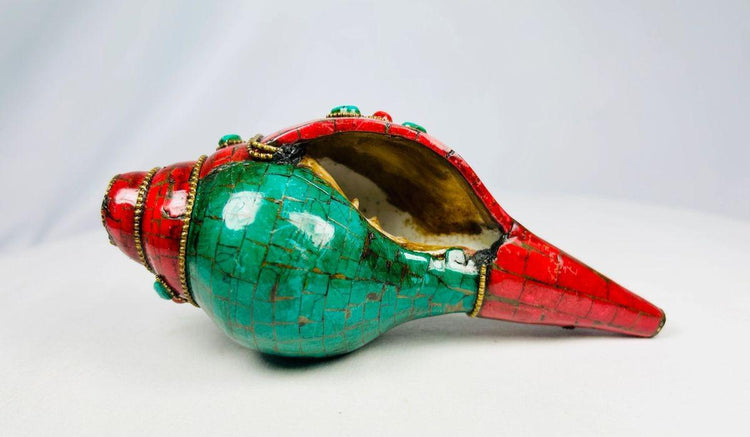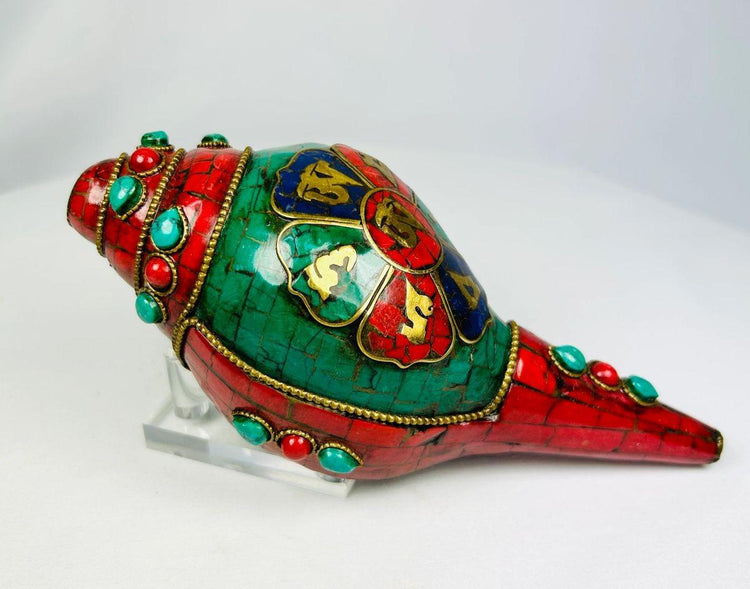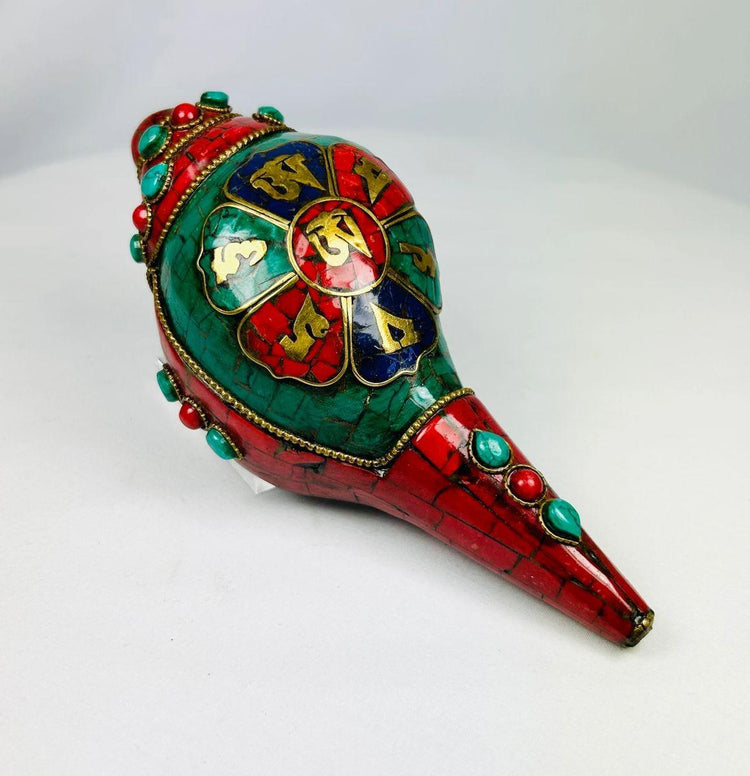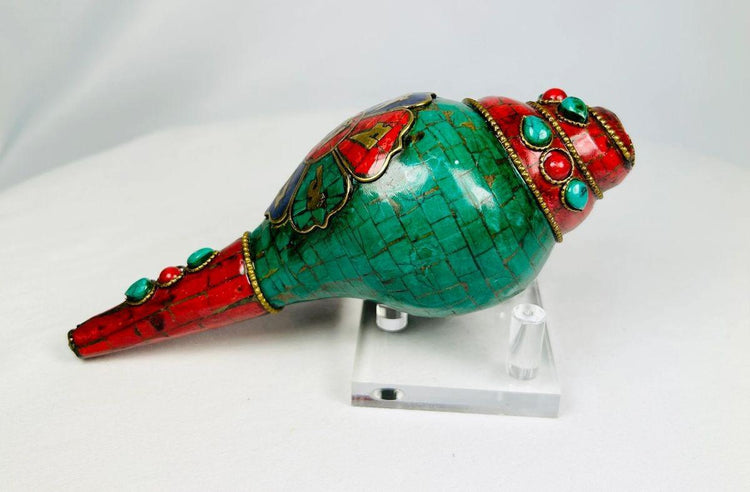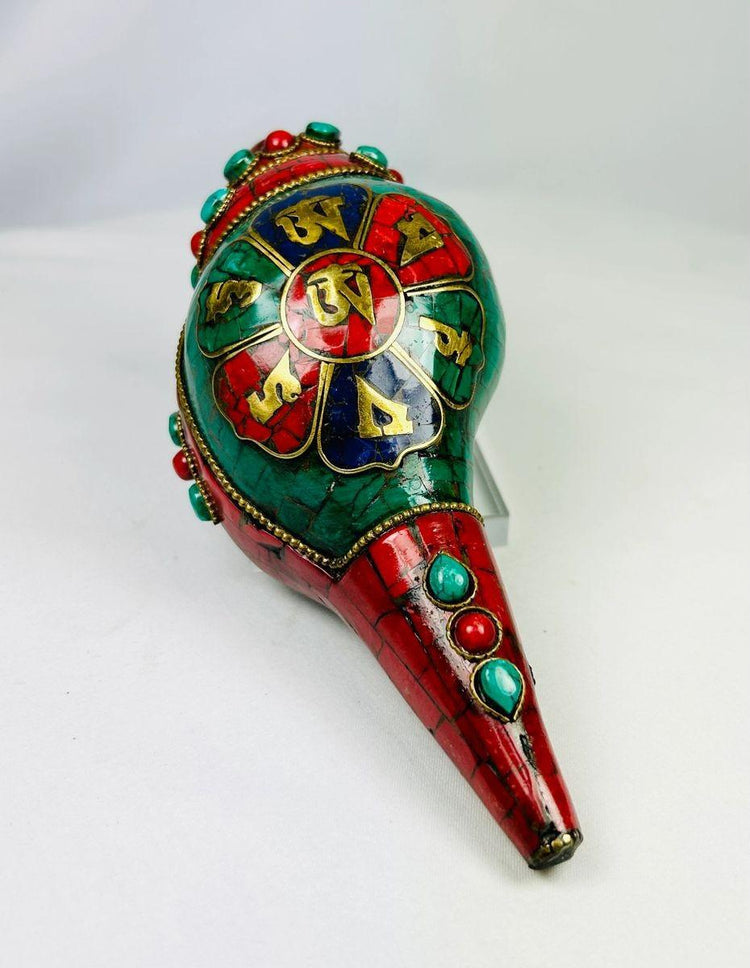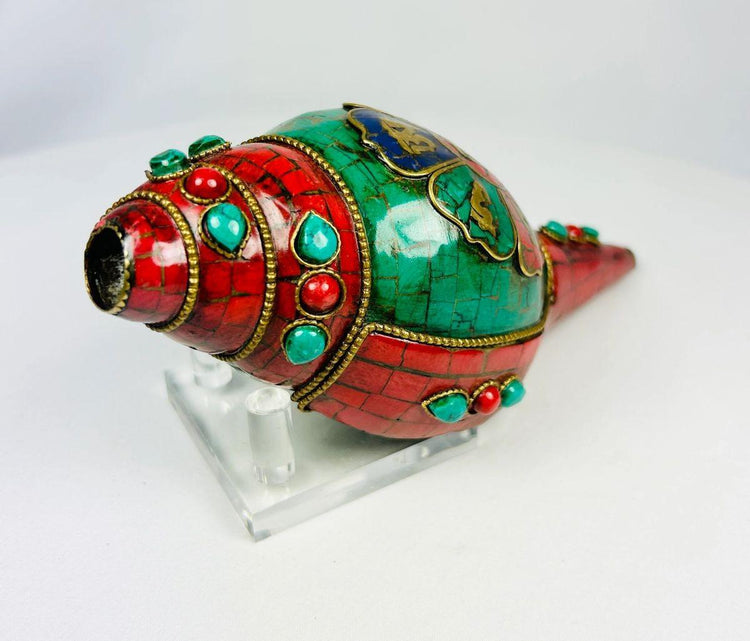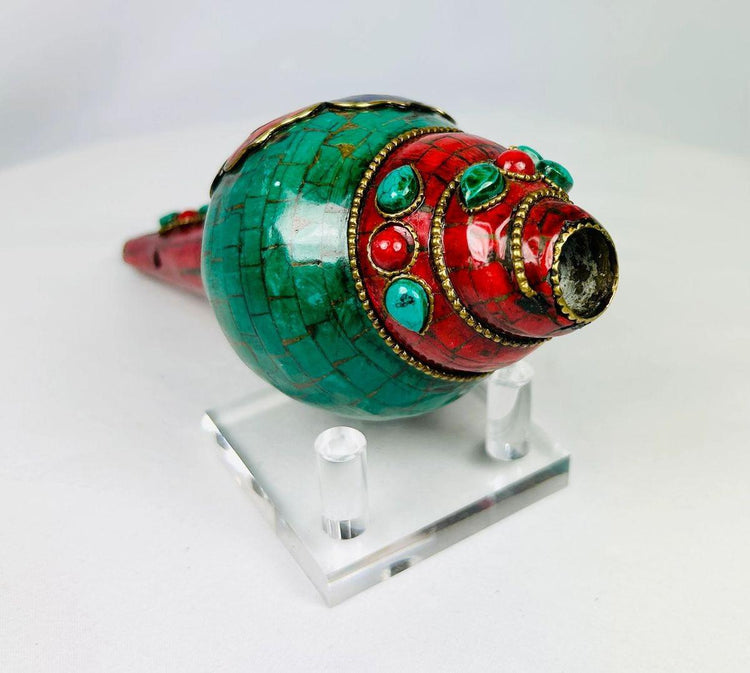Qing Dynasty Tibetan Buddhist Conch | Ritual Shell Trumpet with Precious Stone Inlays & Lacquer Panels | Circa 1700s–1800s
Description
More
Less
Historical Context & Origin
Region: Tibet (under Qing Dynasty influence)
Material: Conch shell, gilded copper alloy, turquoise, coral, lapis lazuli, colored lacquer
Period: Qing Dynasty, circa 18th–19th Century
Description
This exquisite Tibetan ritual conch shell (Dung Dkar) is a masterwork of Buddhist ceremonial art, created during the Qing Dynasty period. The body of the shell is richly decorated with mosaic inlays of turquoise, coral, and lapis lazuli, framed within vivid red and green lacquer panels. Gilded copper alloy filigree borders enclose the inlays, while Tibetan script radiates around a central lotus medallion bearing the sacred mantra Om Mani Padme Hum. Used in temples and monasteries, ritual conch shells such as this were sounded by monks to summon assemblies, announce offerings, or invoke blessings during major ceremonies. Its combination of vibrant colors, precious materials, and symbolic motifs reflects both the devotional significance and the aesthetic refinement of Qing-era Tibetan craftsmanship.
Features
- Hand-carved conch shell base
- Turquoise, coral, and lapis lazuli inlays in mosaic patterns
- Gilded copper alloy borders and floral filigree motifs
- Tibetan script inscriptions of the mantra Om Mani Padme Hum
- Lotus-petal medallion design at center
- Vivid red and green lacquer panels with natural aged patina
Cultural Significance
In Tibetan Buddhism, the conch shell is one of the Eight Auspicious Symbols (Ashtamangala) and represents the far-reaching sound of the Dharma. Ritual trumpets made from sacred shells were believed to carry spiritual power, invoking deities and warding off negativity. This piece exemplifies the fusion of Tibetan spiritual tradition with Qing Dynasty decorative artistry, serving as both a functional ritual object and a symbolic vessel of divine sound.
Condition
Very good antique condition. Natural patina and wear to lacquer consistent with age and use. Minor surface cracks present, typical of antique lacquered ritual objects. No modern repairs detected.
Dimensions (approximate)
Length: 6.25 in
Age
Estimated 150–250 years old
Description
Historical Context & Origin
Region: Tibet (under Qing Dynasty influence)
Material: Conch shell, gilded copper alloy, turquoise, coral, lapis lazuli, colored lacquer
Period: Qing Dynasty, circa 18th–19th Century
Description
This exquisite Tibetan ritual conch shell (Dung Dkar) is a masterwork of Buddhist ceremonial art, created during the Qing Dynasty period. The body of the shell is richly decorated with mosaic inlays of turquoise, coral, and lapis lazuli, framed within vivid red and green lacquer panels. Gilded copper alloy filigree borders enclose the inlays, while Tibetan script radiates around a central lotus medallion bearing the sacred mantra Om Mani Padme Hum. Used in temples and monasteries, ritual conch shells such as this were sounded by monks to summon assemblies, announce offerings, or invoke blessings during major ceremonies. Its combination of vibrant colors, precious materials, and symbolic motifs reflects both the devotional significance and the aesthetic refinement of Qing-era Tibetan craftsmanship.
Features
- Hand-carved conch shell base
- Turquoise, coral, and lapis lazuli inlays in mosaic patterns
- Gilded copper alloy borders and floral filigree motifs
- Tibetan script inscriptions of the mantra Om Mani Padme Hum
- Lotus-petal medallion design at center
- Vivid red and green lacquer panels with natural aged patina
Cultural Significance
In Tibetan Buddhism, the conch shell is one of the Eight Auspicious Symbols (Ashtamangala) and represents the far-reaching sound of the Dharma. Ritual trumpets made from sacred shells were believed to carry spiritual power, invoking deities and warding off negativity. This piece exemplifies the fusion of Tibetan spiritual tradition with Qing Dynasty decorative artistry, serving as both a functional ritual object and a symbolic vessel of divine sound.
Condition
Very good antique condition. Natural patina and wear to lacquer consistent with age and use. Minor surface cracks present, typical of antique lacquered ritual objects. No modern repairs detected.
Dimensions (approximate)
Length: 6.25 in
Age
Estimated 150–250 years old
You May Also Like


























